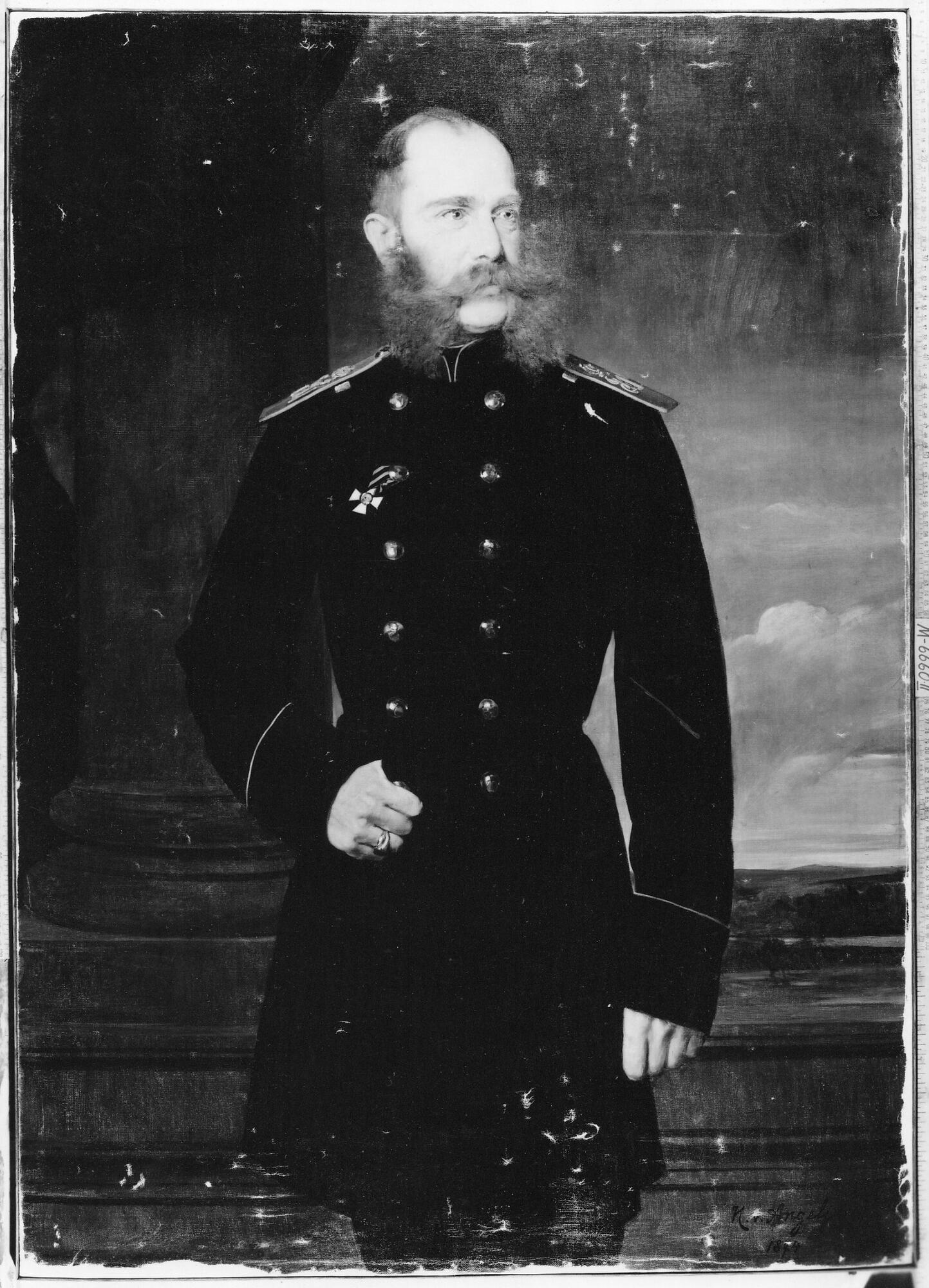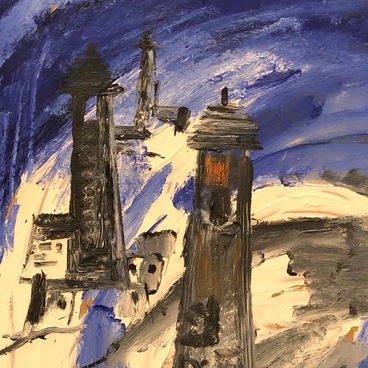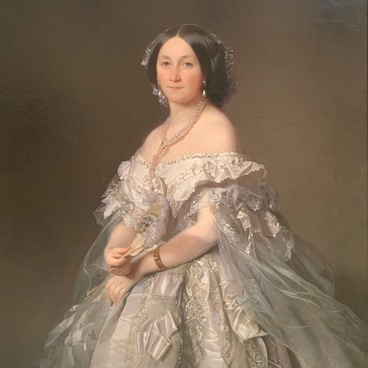Heinrich von Angeli painted Portrait of a Military Man with the Cross of St. George in 1874. For many years there was no information about who was depicted at the painting. After 1917 the portrait lost its original name. It belonged to the funds of the Hermitage Museum. In 1940 the painting Portrait of an Unknown Military Man was given to the Chechen-Ingush ASSR. In 1995 it was evacuated to Moscow. After the restoration works at the Grabar Art Conservation Center, in 2002 the portrait was exhibited at the Tretyakov Gallery, at that time it was named Portrait of a Military Man with the Cross of St. George. In 2014 the painting was returned to Grozny among other rescued paintings.
Nowadays the information about the painting is updated. The picture depicts ruler Franz Joseph I - head of the Austro-Hungarian monarchy, the Austrian Emperor and King of Bohemia. Franz Joseph I was especially known for his long rule - he was in power for 68 years. This period is one of the longest in world history. The Russian island of Franz Josef Land in the Arctic Ocean was named after the Emperor. It was discovered in 1873 by an Austrian polar expedition.
It is known that the ruler had a habit of going to bed early and getting up early. People nicknamed him the ‘morning lark’ for such custom. The Hungarians, the Czechs and the Austrians have embraced this daily routine which the Germans later ‘borrowed’ from the Austrians. The custom of getting up early has survived among the Germans to this day.
The contemporaries noted that the Emperor was conservative in everything - in clothes, ceremonies and etiquette. For example, he declined to have a telephone installed in his palace and only grudgingly agreed to have it wired for electricity.
Franz Joseph I was aware of his weaknesses and called himself ‘the last monarch of the old school’. The emperor had keen interest in the army, parades and uniforms. He tried to observe a strict order and subordination in everything.
Nowadays the information about the painting is updated. The picture depicts ruler Franz Joseph I - head of the Austro-Hungarian monarchy, the Austrian Emperor and King of Bohemia. Franz Joseph I was especially known for his long rule - he was in power for 68 years. This period is one of the longest in world history. The Russian island of Franz Josef Land in the Arctic Ocean was named after the Emperor. It was discovered in 1873 by an Austrian polar expedition.
It is known that the ruler had a habit of going to bed early and getting up early. People nicknamed him the ‘morning lark’ for such custom. The Hungarians, the Czechs and the Austrians have embraced this daily routine which the Germans later ‘borrowed’ from the Austrians. The custom of getting up early has survived among the Germans to this day.
The contemporaries noted that the Emperor was conservative in everything - in clothes, ceremonies and etiquette. For example, he declined to have a telephone installed in his palace and only grudgingly agreed to have it wired for electricity.
Franz Joseph I was aware of his weaknesses and called himself ‘the last monarch of the old school’. The emperor had keen interest in the army, parades and uniforms. He tried to observe a strict order and subordination in everything.
At the painting Franz Joseph I is depicted wearing a frock-coat of a chief of the Austrian Emperor Kexholm Grenadier regiment (an infantry military unit of the Russian Imperial army). Franz Joseph I was a Chevalier of the Orders of St. Andrew the Apostle, of St. Alexander Nevsky, of the White Eagle, of St. Anne (1st class), of St. George (4th class).
Henry von Angeli was a recognized Austrian genre and portrait painter. He was born in 1840 in the Austro-Hungarian city of Odenburg, today’s Sopron. He studied at the Vienna Academy of Arts and the Düsseldorf Academy of Arts. In the 1860s, he was fascinated with genre paintings that resembled the Dutch masters’ works. But Angeli focused on portrait art, after he created his last genre painting ‘The Denial of Absolution’. He worked at the German imperial court, the English court and the court of the Russian Empire. 1894 saw one of the districts of the Austrian capital named after him – Angeligasse.
Henry von Angeli was a recognized Austrian genre and portrait painter. He was born in 1840 in the Austro-Hungarian city of Odenburg, today’s Sopron. He studied at the Vienna Academy of Arts and the Düsseldorf Academy of Arts. In the 1860s, he was fascinated with genre paintings that resembled the Dutch masters’ works. But Angeli focused on portrait art, after he created his last genre painting ‘The Denial of Absolution’. He worked at the German imperial court, the English court and the court of the Russian Empire. 1894 saw one of the districts of the Austrian capital named after him – Angeligasse.


